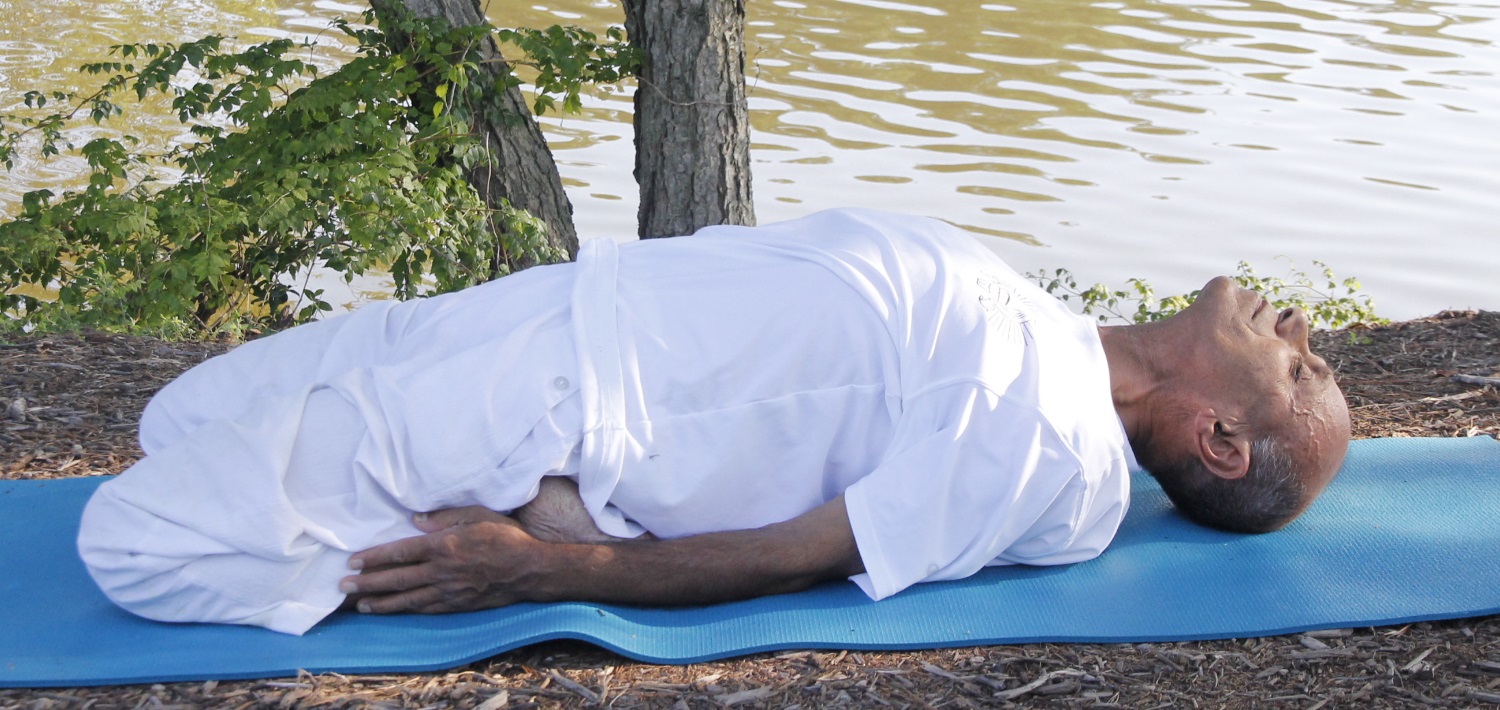Supta Vajrasana (सुप्त वज्रासन) is a reclining variation of the seated Vajrasana. It involves a deep backbend and offers a great stretch for the quadriceps. A closely related asana, the Supta Virasana (सुप्त वीरासन), is a minor variation of the Supta Vajrasana pose. In the Vajrasana, the buttocks are resting on the heels whereas in the Virasana, the heels are moved further apart so the buttocks are resting on the ground. This pose also releases tightness from the hips and the pelvic area. It is one of the poses recommended for athletes like hikers, runners, bikers, tennis players etc.
I hope you will enjoy practicing with me using the video.
Step-by-step
- Begin by sitting in the Vajrasana with knees close to each other. In this asana, the buttocks are allowed to rest on the heels, and the spine is maintained erect, but relaxed. Take a few slightly deeper than normal breaths.
- Place your hands slightly behind you. Slowly, begin to bend the elbows one at a time and finally place both the elbows on the ground. As you get into this position, your knees may begin to feel a stretch and, if needed, you may spread the knees out a little.
- Slowly begin to slide the elbows closer to the feet until your head is resting on the ground. Keep the head touching the floor lightly.
- Sliding the elbows closer to the feet, make the effort to keep the knees on the floor or as close to the floor as comfortable. With the knees on the floor, try to bring the knees closer to each other as well. In this posture, the shoulders and the upper back are lifted off the floor. Stay in this position for 4-5 breaths.
- In the final variation, try to slide the head back so the upper back and the shoulders are resting on the ground. In this effort, if the knees begin to feel any discomfort, allow them to lift off the floor or separate them further apart. Try not to maintain the pose with any kind of strain on the knees, hips or the spine.
- Stay in the final position for about 4-5 breaths. To come out, first sit up on the elbows, keeping the knees slightly bent. Finally, when you are fully seated, you may stretch the legs straight and relax.
Variation with the Virasana
From the seated Vajrasana, slide the heels apart until the buttocks are resting on the ground. This is known as the Virasana (The Hero Pose).
From the seated Virasana, follow the same steps as given above for the Vajrasana. While in the final posture, become aware of any subtle difference in the experience as compared to the Supta Vajrasana.
Benefits
- Stretches and strengthens the knees, quads, hips and ankles
- Great stretch for the core, back and the pelvic area, especially if you are able to rest the upper back and shoulders on the ground.
- Massages the abdominal muscles which helps alleviate digestive issues and constipation.
- With the lengthening of the torso and expansion of the chest, it helps improve lung capacity and strengthens the heart.
- By maintaining the final posture for a few extra breaths with full awareness of every part of the body that’s being stretched, the mind feels a sense of calm which can alleviate any mental stress or tension.
Contraindications
- Avoid the asana if you have had any pain or injury to the knees, hips, ankles or the back.
- If you’ve had a recent surgery of the knees or the shoulders, you should not practice the pose without consent of your medical provider.
- Avoid the asana if you are pregnant. Wait for about 8 weeks post-delivery before attempting the asana.


Recent Comments